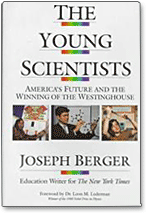
Every few months, American newspapers publish another dreary statistic about the country’s scientific ignorance. But there are schools in the U.S.– like the Bronx High School of Science and Stuyvesant High School in New York and the North Carolina School of Science and Mathematics in Durham–that defy this gloomy picture, that may show the way for this country to develop the scientists and researchers we need to maintain our economic and technological stature. These are the schools that year after year win the Intel science competition, formerly known as the Westinghouse Talent Search, the nation’s most prestigious academic contest. They teach their students how to do research. Students do science, rather than just study it, and many of the students go on to establish solid, even triumphant careers in science. Early training works. Five teenaged Westinghouse winners have gone on as adults to capture the Nobel Prize. Eight have been awarded MacArthur Foundation Fellowships. In short, winning a Westinghouse (now Intel) is remarkably predictive of later success in science. Just as the best pianists and ballet dancers are those who have been taught their craft in childhood, scientists too are bred at an early age. The Young Scientists looks at what makes the winning schools and students, and how parents and teachers can help.
